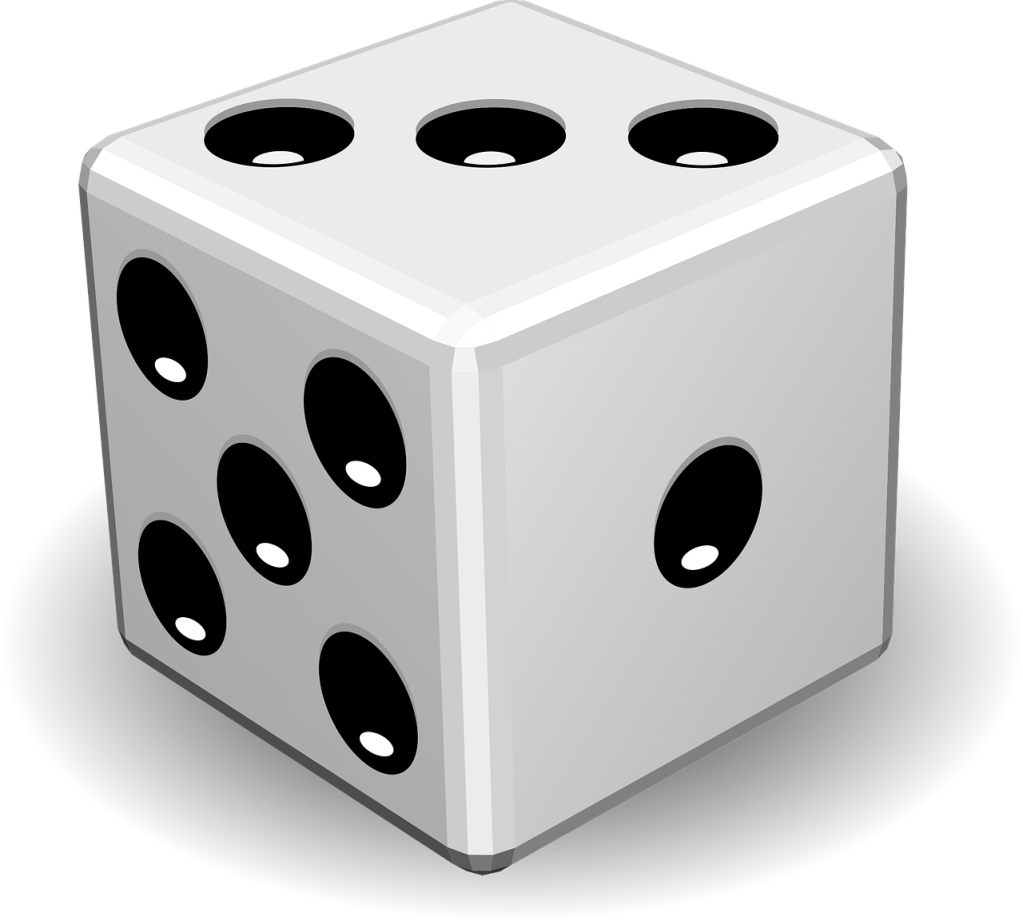Welcome to the Beginner’s Guide to Mechanical Literacy! Today we’re going to be covering one of the most fundamental kinds of rolls in TTRPGs, the Roll-Over. It’s such a fundamental concept that I have no idea where it came from, but it’s the primary form of roll in Dungeon and Dragons and thus other games like it. Join me as I explore the mechanic in more detail below.
The Basics
In the Roll-Over, the goal is for a modified dice roll to achieve a result greater than a given target number (TN). Typically, this is with a single dice, thus having a flat probability distribution of results. This means that the effect of a modifier is generally going to be proportional to the size of the dice rolled.
Overall, a Roll-Over mechanic is intuitive to understand. Higher numbers are generally understood to be better, and thus rolling higher generating a better result fits with that understanding. However, what exactly constitutes a high roll becomes less intuitive once the dice size becomes too large. In addition, issues can arise when the TN required is so large that even a comparatively high roll cannot generate a success except with a correspondingly high modifier.
Keeping the dice size smaller reduces the total possible outcomes on a roll, making for more predictable results. This combined with the greater relative effect of smaller modifiers makes the math easier to comprehend instinctively which can speed up play.

The Complications
Variable TNs: While in some games, the desired TN is the same for every roll, in many games that use the Roll-Over, the TN varies from roll to roll. Variable TNs are often used to express varying degrees of difficulty for a given action. While this can help keep actions from feeling the same, this adds a big step to resolving the roll, as the player has to consult with the GM to determine if the roll is successful. Even if a variable TN is procedurally generated, then that generation still adds to processing time.
Furthermore, it becomes mathematically much more complicated to add multiple degrees of success to a variable TN, as those degrees will have to be determined around that variable TN. It is not impossible but it multiplies the complexity of having a variable TN by adding, essentially, multiple TNs.
Variable TNs also tend to increase at a linear rate with character stat increases. This can lead to stat increases feeling unimportant and character advancement to lose some of its spark. This is compounded if the rate of TN increase is faster than the rate of stat increase. Characters becoming statistically weaker as they advance is almost always an undesired result.
Multiple Modifiers: Most games that use the Roll-Over have multiple sources of modifiers to the dice roll. Some of these modifiers are consistent, derived from a character’s stats, but some of them emerge from situational conditions. Since players are likely to want as many possible positive modifiers as possible, this will lead to negotiation with the GM to determine total modifiers before the roll. Summing all of the modifiers will also lead to a delay in parsing the results of a roll, thus further slowing play.

The Variants
Multiple Dice: Some games, like Apocalypse World, use a variant of on the Roll-Over where multiple dice are rolled and added together to determine the pre-modified result. This slows down play significantly, especially as the number of dice increases, and thus works best without variable TNs and by reducing the number of modifiers as much as possible. However, using multiple dice creates a normalized probability distribution, which greatly increases the power of even small modifiers.
Exploding Dice: Some games that use a multiple dice variant use exploding dice, wherein if the maximum result of a single dice is rolled, another dice is rolled and added to the sum. While this can feel incredibly powerful, it also adds more dice to the calculation, thus yielding a slower result. In addition, if the math of the TNs is built around assumptions of exploding, it can become very difficult to achieve success without exploding, thus making non-exceptional rolls feel significantly less powerful.
Roll-Under: Some games, especially in the OSR, have success for some rolls achieved by rolling under a TN. This TN is almost always determined directly from a character’s stats. While desiring a smaller roll is less intuitive than desiring a higher roll, Roll-Under usually doesn’t have a modifier to the rolls, even for exterior factors. This combined with a procedurally generated TN that can be found on the character sheet leads to Roll-Under being much swifter to resolve than most forms of Roll-Over.
The Over-Under: A rare variant, popularized by Lasers and Feelings, is the Over-Under. Character stats are used as TNs as in the Roll-Under, but they serve a dual purpose. Depending on the type of action, players may want to roll over or roll under their stat in order to achieve a sucess. For example, in Lasers and Feelings, a player wants to roll under their stat in order to succeed in a Lasers based action, while they want to roll over to succeed in a Feelings based action. This has all of the strengths of the Roll-Under, with only a slight delay in figuring out whether a given action needs a high roll or a low roll.
Outro
Thank you for joining me in this new series! I’d appreciate any feedback about the format, the content, and what mechanics people would like to see me cover in this series. Next time, though, we will be continuing on with the primary alternative to the Roll-Over: the Dice Pool.
You can find my games at https://goat-song-publishing.itch.io/. If you are interested in hiring me to work on your game in any capacity, you can contact me at goatsongpublishing@gmail.com.
One thought on “Beginner’s Guide to Mechanical Literacy: The Roll-Over”